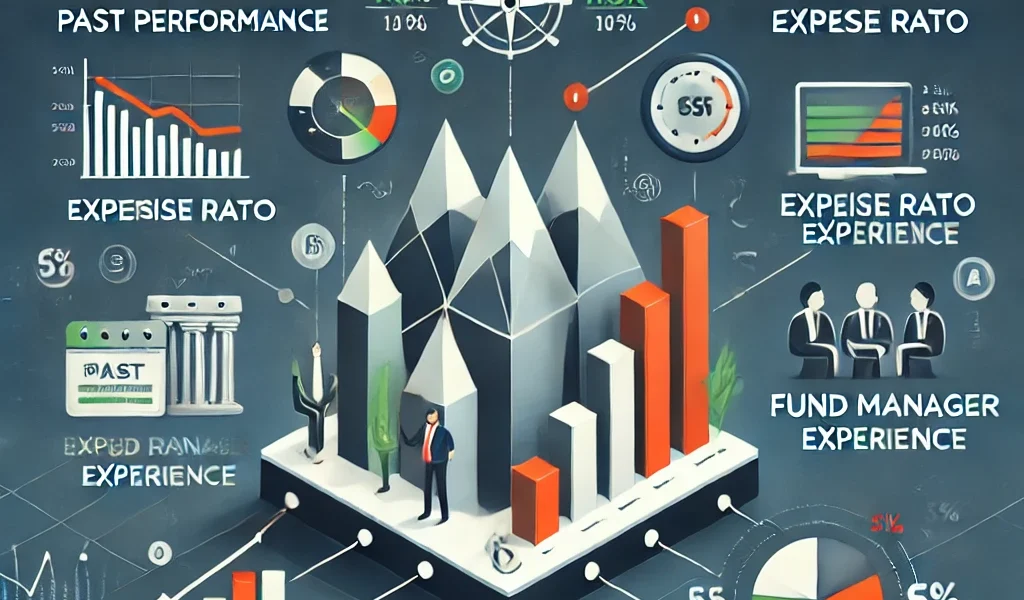Investing in mutual funds is an effective way to build wealth over time, but choosing the right one requires careful analysis. A well-informed investor must evaluate key parameters to ensure that the selected mutual fund aligns with their financial goals, risk tolerance, and investment strategy. In this guide, we will explore the crucial factors you should consider before investing in a mutual fund.
1. Understand Your Investment Goals
Before analyzing a mutual fund, determine your financial objectives. Are you investing for long-term wealth creation, retirement, or short-term gains? Different types of mutual funds cater to different goals. Equity funds are suitable for long-term growth, while debt funds are ideal for stability and regular income.
2. Assess the Fund’s Historical Performance
Examining past performance provides insights into how well the fund has managed returns over time. However, remember that past performance does not guarantee future results. Compare the fund’s performance against its benchmark index and category peers over various time frames (1-year, 3-year, 5-year, and 10-year periods).
3. Expense Ratio and Fees
The expense ratio indicates the cost of managing the mutual fund. A lower expense ratio generally translates to higher returns for investors. Additionally, check if the fund has exit loads or any other charges that might impact your investment returns.
4. Risk and Volatility Analysis
Understanding the risk associated with a mutual fund is crucial. Check metrics such as:
- Standard Deviation: Measures the fund’s volatility compared to its average return.
- Beta: Indicates the fund’s sensitivity to market movements.
- Sharpe Ratio: Assesses risk-adjusted returns (higher is better).
- Alpha: Measures a fund’s ability to outperform its benchmark.
5. Fund Manager’s Track Record
The expertise and experience of the fund manager play a significant role in the fund’s success. Analyze their track record, investment strategies, and tenure with the fund. A skilled and consistent fund manager can steer the fund through market fluctuations effectively.
6. Portfolio Composition and Asset Allocation
Review the fund’s holdings to ensure they align with your risk appetite and investment strategy. Key aspects to analyze include:
- Equity Funds: Check sectoral allocation and individual stock holdings.
- Debt Funds: Examine credit quality, average maturity, and interest rate sensitivity.
- Diversification: A well-diversified portfolio reduces risk exposure.
7. Fund’s Investment Style and Strategy
Understanding whether the fund follows a growth, value, or blend investment strategy is essential. Also, check whether it adheres to an active or passive management approach.
8. Tax Implications
Different types of mutual funds have varying tax treatments.
- Equity Funds: Gains held for more than one year attract long-term capital gains (LTCG) tax.
- Debt Funds: Subject to taxation based on the holding period (short-term vs. long-term capital gains).
- Dividend Taxation: Dividends are added to your taxable income.
9. Liquidity and Exit Options
Evaluate how easy it is to redeem your investment when needed. Open-ended funds offer greater liquidity, whereas closed-ended funds have a lock-in period. Check if the fund imposes any exit load.
10. Compare with Peers
Always compare the shortlisted mutual fund with similar funds in the category. Look at performance consistency, risk-adjusted returns, and fund management efficiency before making a decision.
Conclusion
Analyzing a mutual fund before investing is crucial to making informed investment decisions. By considering factors such as historical performance, risk parameters, expense ratio, portfolio composition, and fund manager expertise, investors can align their choices with financial objectives. A well-researched investment strategy ensures long-term financial growth while minimizing risks. Always seek professional advice if needed before finalizing your investment in a mutual fund.




